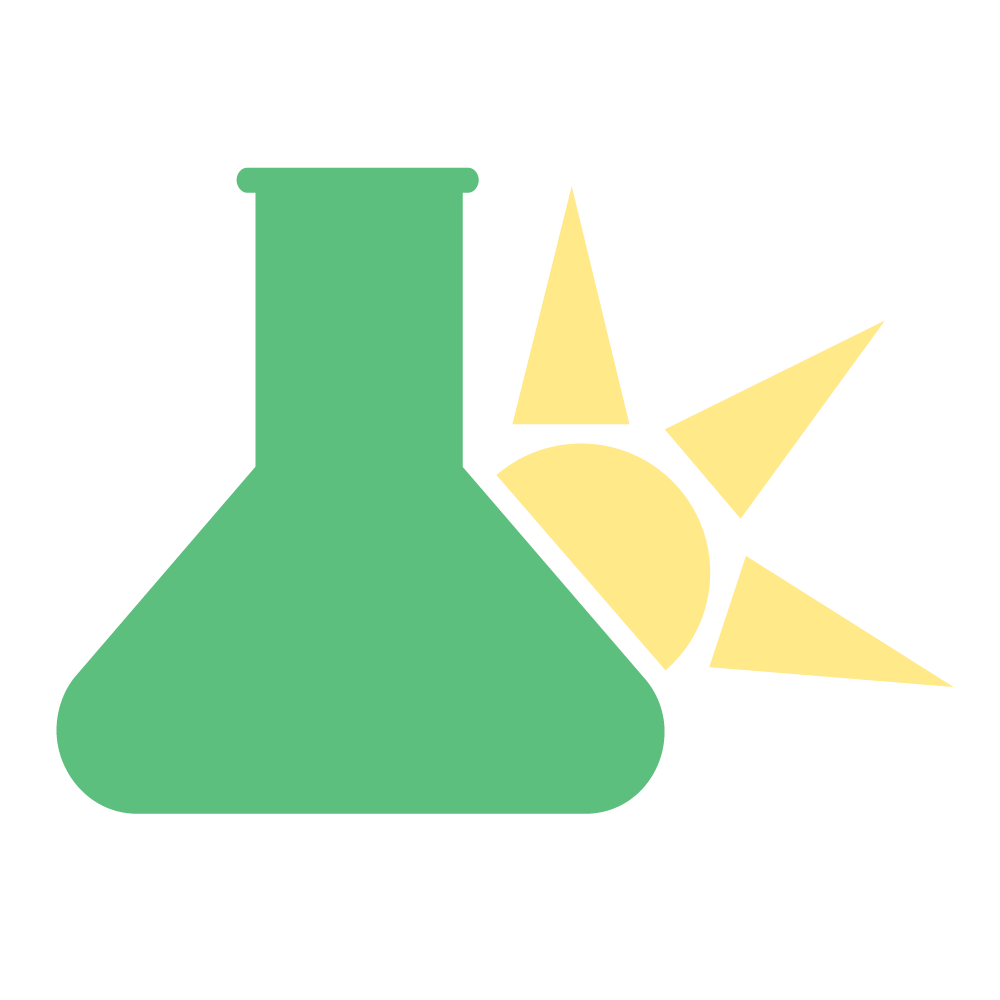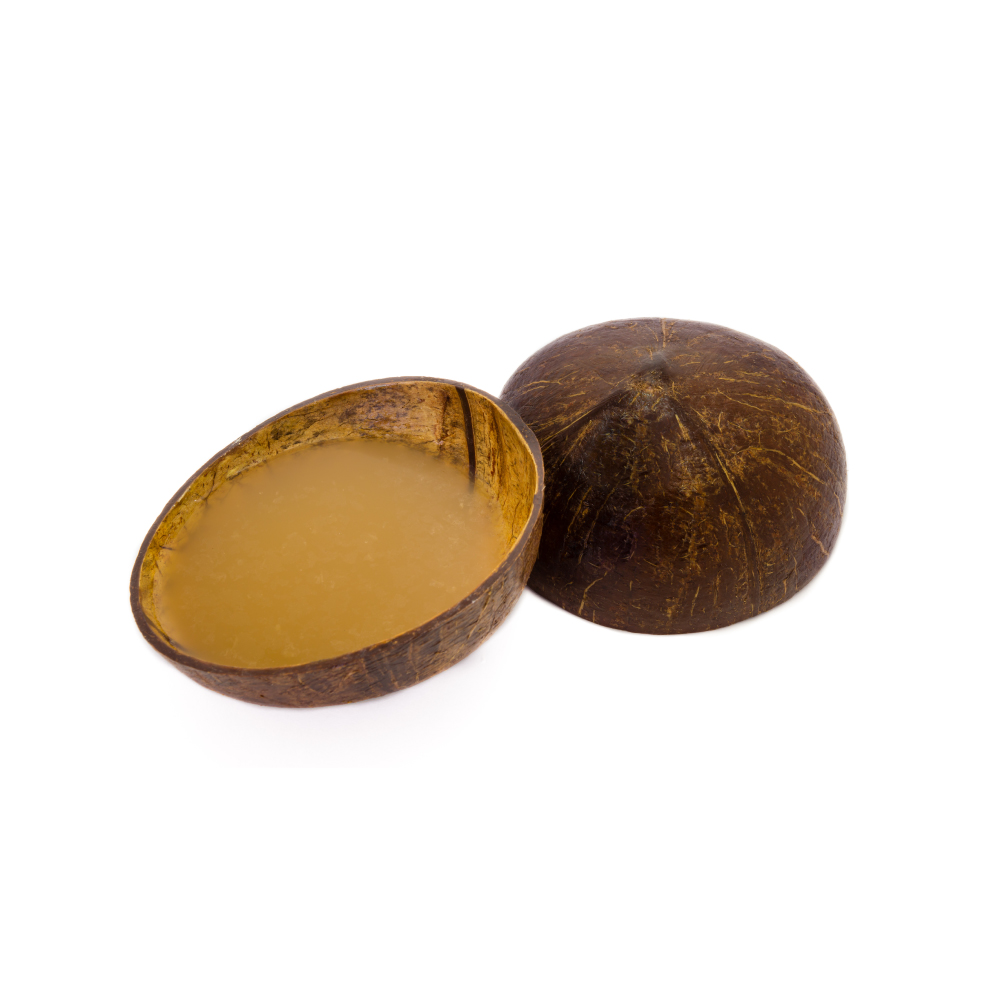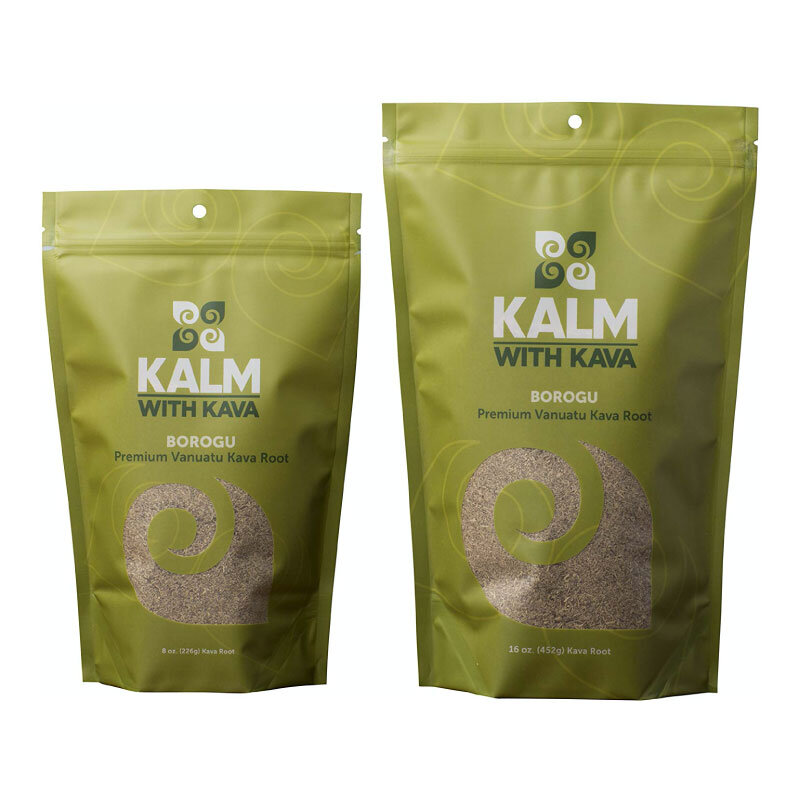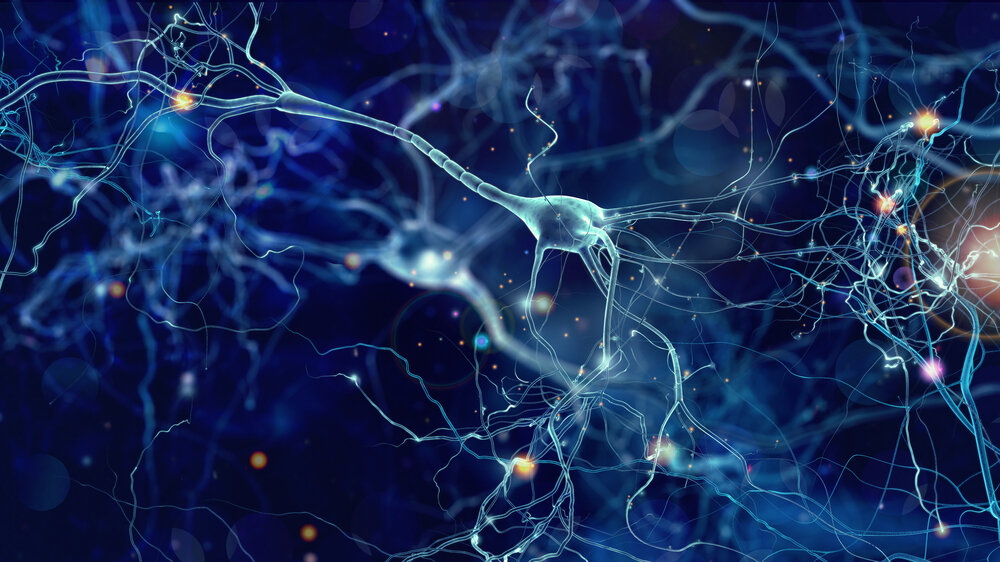What is Kava?
Kava is a tropical plant species from the islands of the pacific ocean.
The roots of the kava plant have a long history of use — primarily for use during ceremonies, during ceremonies and celebrations, and to socialize with friends and family.
Active compounds in the kava root produce intense feelings of euphoria, relaxation, and promote a sense of well being. Modern uses of the plant primarily revolve around its ability to curb anxiety symptoms, and promote deep conversation and rest.
Kava isn't psychedelic, but it does have powerful relaxant effects. In higher doses the herb can produce sensations similar to that of alcohol, but with much more clarity of thought.
The dose of kava can vary a lot — ranging from about 5 to 20 grams of raw, dried powder per serving.
In this monograph, we’ll discuss everything you need to know about kava. We’ll cover what is it, how it works, and how you can prepare kava yourself at home with the traditional method, and the modern (more convenient) method.
We’ll also discuss some of the best kava root powders to try for yourself.
Let’s jump straight in.
Looking to Buy Kava? Try These Products:
What is Kava Used For?
Kava has been used for centuries for one main purpose — to relax the mind.
The benefits of these relaxing effects spill over into other applications — such as supporting sleep, recovering faster from illness, easing stress and anxiety, and simply relaxing after a long day of hard work.
Kava was used traditionally on pacific islands like Vanuatu, Fiji, and Samoa during ceremonies. These ceremonies included everything from visits of neighboring tribes, to weddings or funerals.
In modern times, people use the herb to ease anxiety symptoms, reduce the effects of stress on the body, relieve muscle tension, uplift the mood, and support sleep.
Kava Bars: Socializing With Kava
One of the most popular applications of the herb today is in a social context. The euphoric and relaxing profile of the plant along with its rich history of ceremonial use make it perfect for group settings. people can lay back, relax, drink kava, and catch up together.
Drinking kava can easily be performed at home, but is more commonly taking place in so-called kava bars — which is a concept derived from the traditional nakmals of the pacific islands. It’s a place where people go to hang out, get comfortable, and sip on professionally-prepared kava for a few hours at a time.
Kava bars are taking on the role of traditional bars as a place to hang out, but without the negative consequences of drinking alcohol.
There are dozens of kava bars now in operation across the United States and Europe including most of the major cities.
Traditional Uses of Kava:
+ The Pacific Islands
Most of the traditional use of kava comes from the islands of the Pacific ocean where kava originated from.
Here, the plant was used during ceremonies to bolster the connection between the living and the dead, and to induce a state of meditation and focus.
The herb was frequently used at weddings, funerals, and as a way to show respect to neighboring tribes when they came for a visit. A lot of strong bonds were formed over kava — including the formation of a brotherhood between two pacific island cultures (Tonga and Samoa) that spent generations beforehand at war with eachother.
Kava and related species were also used for a lot of different purposes and was considered a bit of a panacea in the region.
Some species of kava are reserved only for medicinal use among traditional pacific island cultures. In Vanuatu and Papua New Guinea, the root of Piper wichmannii is used to treat a wide range of disorders. The roots of this plant are known to cause severe side effects including nausea, vomiting, dizziness, and drunkeness lasting up to two days. These plants are reserved for local herbalists only and aren't used sold to the international public.
In New Zealand, a related species (Piper excelsum) known commonly as kawakawa is used to treat cuts, bruises, and skin infections.
+ Western Herbal Medicine
Traditional uses in Western herbal medicine are derived from the pacific island traditional uses. The main applications include neuralgia, dizziness, chronic bronchitis, cystitis, dysuria, rheumatism, anorexia, leukorrhea, gonorrhoea, gout, and joint pain [5].
Herb Details: Kava
Herbal Actions:
- Anxiolytic
- Hypnotic (in high doses)
- Relaxing nervine
- Antifungal
- Anticonvulsant
- Sedative (mild)
- Local anasthetic
- Analgesic
- Antipruritic
- Urinary Antiseptic
Dose
- (Dried Powdered Herb)
5 – 20 grams - How to Prepare Kava
Part Used
Rhizome
Family Name
Piperacea
Distribution
Pacific Islands (numerous)
Constituents of Interest
- Kava lactones
- Flavonoids
- Methystcin
- Kavain
- Chalcones
Common Names
- Awa (Hawaii)
- Ava (Samoa)
- Yaqona (Fiji)
- Sakau (Pohnpei)
- Malok (Vanuatu)
CYP450
- Unknown
Quality
- Unknown
Pregnancy
- Avoid use during pregnancy.
Taste
- Unknown
Duration of Use
- Long term use acceptable in smaller doses.
Kava Kava Botanical Information
kava has a few characteristic growth patterns that differ depending on the cultivar.
However, the kava plant generally grows to form a large shrub with dozens of stalks branching out from a central root clump. The stalks and leaves of the plant can grow to around two meters tall, with the roots reaching up to 60 cm below the soil.
In the Piperaceae family, there are about 2400 species distributed through only 10 genera. The Piper genus accounts for about 2000 of these species.
Some of the main species of piper plants used in medicine include:
Piper nigrum (Black pepper)
Piper excelsum (Kawakawa)
Piper wichmannii (ISA kava)
Piper methysticym (Kava kava)
Piper kadsura (Japanese pepper)
Piper betle (Betel nut)
Piper cubeba (Cubeb)
Piper aduncum (Spiked pepper)
Piper longum (Long pepper)
How to Prepare Kava Root
There are a few different ways to prepare kava root for drinking. You can use the traditional method involving a large bowl, strainer, and about 15 or 20 minutes of hand mixing, or go with more modern methods like the AluBall or instant kava powders.
You can also order kava tinctures or capsules to use directly — no preparation required.
If you’re interested in using kava at home, I recommend you check out my recent guide on how to prepare kava. I recommend you give the traditional method a try, but if you’d rather prepare kava without any time mixing, I’ve included some information on how to use an AluBall and instant kava powders as well.
Pharmacology & Medical Research
+ Neurological Activity
The pyrones contained in kava have been shown through various studies to provide multiple beneficial actions on the neurological system. Benefits include analgesic, antispasmodic, anticonvulsant, neuroprotective, and protection from ischemia [9-18].
The mechanisms of action for these effects are as follows:
- Calcium channel agonism [19, 20]
- Blocking of sodium channels [21-23]
- Monoamine oxidase inhibition [1]
- Noradrenalin uptake inhibition [24]
- GABA modulation [28]
Compelling evidence has been found to suggest kava extracts can act selectively on the limbic structures in the brain to reduce anxiety [26].
Kava extracts have also been show to interact with glutamate [25], dopamine (water soluble fractions only) [27], noradrenalin [24], and serotonin (water soluble fractions only [27, 19, 20].
+ Generalized Anxiety Disorder
An 8-week randomized, double-blind clinical trial involving 129 individuals found that a 400 mg Kava extract was as effective at treating generalized anxiety disorder as 10 mg Buspirone, and 100 mg Opipramol [29].
Kava: Phytochemicals & Active Ingredients
Kava extracts are usually standardized to 30% kava lactones but there are also some preparations concentrated to contain as much as 70% kavalactones by weight.
The kava lactone content in the dried plant root can vary from 3-20% [3].
Kava contains kava lactones (3.5-15% of the dried root), flavonoids (flavokawains), methystcin, dihydromethysticin, kavain, dihydrokavain, chalcones (flavokavains A-C). [4, 5].
Clinical Applications Of Kava:
Kava is useful as an anxiolytic, anti-insomniac, and muscle relaxant. It has also shown to be beneficial in treating and recovering from cerebral ischemic attacks (stroke).
Cautions & Safety
Avoid use of kava if pregnant, breastfeeding, or experiencing liver dysfunction. Never consume kava with alcohol.
Due to the dopamine antagonizing actions of kava, care should be taken with those on dopaminergic medications, or with dopamine disorders like Parkinson’s disease. [5].
Allergies to kava or kavapyrones have been reported [3, 6-8].
The LD50 of kavalactones is 3-400 mg/kg [2].
+ Contraindications:
- Pregnancy or breastfeeding
- If taking medications (such as SSRIs, Tricyclic antidepressants, MAO inhibitors)
- Underlying liver or kidney disorders
- Never use kava alongside alcohol consumption
Recent Blog Posts:
References:
Uebelhack, R., Franke, L., & Schewe, H. J. (1998). Inhibition of platelet MAO-B by kava pyrone-enriched extract from Piper methysticum Forster (kava-kava). Pharmacopsychiatry, 31(05), 187-192.
Meyer HG. Pharmakologie der wirksamen prinzipien de kawarhizoms (Piper methysticum Forst.). Arch Int Pharmacodyn Ther 1962; 138: 505-536
Ulbricht, C. (2002). Kava Monograph. Journal Of Herbal Pharmacotherapy, 2(4), 65-91. doi:10.1300/J157v02n04_07
Hoffmann, D. (2003). Medical herbalism: The science and practice of herbal medicine. Rochester, VT: Healing Arts Press.
Bone, K. (2003). A clinical guide to blending liquid herbs: Herbal formulations for the individual patient. Edinburgh [u.a., MO: Churchill Livingstone.
Jappe U, Franke I, Reinhold D, et al. Sebotropic drug reaction resulting from kava-kava extract therapy: a new entity? J Am Acad Dermatol 1998; 38 (1): 104 106.
Schmidt P, Boehncke WH. Delayed-type hypersensitivity reaction to kava-kava extract. Contact Dermatitis 2000; 42 (6): 363-364.
Suss R, Lehmann P. [Hematogenous contact eczema caused by phytogenic drugs exemplified by kava root extract]. Hautarzt 1996; 47 (6): 459-461.
Brüggemann F, Meyer HJ. Die analgetische wirkung der Kawa-inhaltsstoffe dihydrokawain und dihydromethysticin. Arzneimittelforschung 1963; 13: 407-409.
Hänsel R. Characterization and physiological activity of some Kawa constituents. Pacific Science 1968; 22: 293-313.
Kretzschmar R, Meyer HJ. [Comparative studies on the anticonvulsant activity of the pyrone compounds of Piper methysticum Forst]. Arch Int Pharmacodyn Ther 1969; 177 (2): 261-277.
Kretzschmar R, Meyer HJ, Teschendorf HJ. Strychnine antagonistic potency of pyrone compounds of the kavaroot (Piper methysticum Forst.). Experientia 1970; 26 (3): 283-284.
Kretzschmar R, Teschendorf HJ, Ladous A, et al. On the sedative action of the kava rhizome (Piper methyst.). Acta Pharmacol Toxicol 1971; 29(4):26. Monograph from Natural Standard 85
Meyer HJ. [Spasmolytic effect of dihydromethysticin, a constituent of Piper methysticum Forst]. Arch Int Pharmacodyn Ther 1965; 154 (2): 449-467.
Meyer HJ, Meyer-Burg J. Hemmung des elektrokrampfes durch die kawapyrone dihydromethysticin und dihydrokawain. Arch Int Pharmacodyn 1964; 148 (1-2): 97-110.
Singh Y, Blumenthal M. Kava: an overview. Distribution, mythology, botany, culture, chemistry and pharmacology of the South Pacific’s most revered herb. Herbal Gram 1997; 39 (Suppl 1): 34-56.
Backhauss C, Krieglstein J. Extract of kava (Piper methysticum) and its methysticin constituents protect brain tissue against ischemic damage in rodents. European Journal of Pharmacology 1992; 215 (2-3): 265-269.
Kleiser B, Diepers M, Wagner N, et al. Treatment of intracerebral hematomas with kava in rats. Neurology 1998; 50 (4): a398.
Walden, J., Von Wegerer, J., Winter, U., Berger, M., & Grunze, H. (1997). Effects of kawain and dihydromethysticin on field potential changes in the hippocampus. Progress in Neuro-Psychopharmacology and Biological Psychiatry, 21(4), 697-706.
Walden, J., Von Wegerer, J. Ö. R. G., Winter, U., & Berger, M. (1997). Actions of Kavain and Dihydromethysticin on Ipsapirone‐Induced Field Potential Changes in the Hippocampus. Human Psychopharmacology: Clinical and Experimental, 12(3), 265-270.
Gleitz, J., Friese, J., Beile, A., Ameri, A., & Peters, T. (1996). Anticonvulsive action of (±)-kavain estimated from its properties on stimulated synaptosomes and Na+ channel receptor sites. European journal of pharmacology, 315(1), 89-97.
Gleitz J, Gottner N, Ameri A, et al. Kavain inhibits non-stereospecifically veratridine-activated Na+ channels. Planta Med 1996; 62: 580-581.
Magura EI, Kopanitsa MV, Gleitz J, et al. Kava extract ingredients, (+)-methysticin and (+/2)-kavain inhibit voltage-operated Na(+)-channels in rat CA1 hippocampal neurons. Neuroscience 1997; 81 (2): 345-351.
Seitz, U., Schüle, A., & Gleitz, J. (1997). [3H]-monoamine uptake inhibition properties of kava pyrones. Planta medica, 63(06), 548-549.
Gleitz J, Beile A, Peters T. (+/2)-kavain inhibits the veratridine- and KCl-induced increase in intracellular Ca2+ and glutamate-release of rat cerebrocortical synaptosomes. Neuropharmacology 1996; 35 (2): 179-186
Holm E, Staedt U, Heep J, et al. [The action profile of D,L-kavain. Cerebral sites and sleep-wakefulness-rhythm in animals]. Arzneimittelforschung 1991; 41 (7): 673-683
Baum SS, Hill R, Rommelspacher H. Effect of kava extract and individual kavapyrones on neurotransmitter levels in the nucleus accumbens of rats. Prog Neuropsychopharmacol Biol Psychiatry 1998; 22 (7): 1105-1120.
Jussofie, A., Schmiz, A., & Hiemke, C. (1994). Kavapyrone enriched extract fromPiper methysticum as modulator of the GABA binding site in different regions of rat brain. Psychopharmacology, 116(4), 469-474. [animal studies].
Boerner, R. J., Sommer, H., Berger, W., Kuhn, U., Schmidt, U., & Mannel, M. (2003). Kava-Kava extract LI 150 is as effective as Opipramol and Buspirone in Generalised Anxiety Disorder–an 8-week randomized, double-blind multi-centre clinical trial in 129 out-patients. Phytomedicine, 10, 38-49. [RCT].














As COVID-19 continues to spread around the world, we’re getting a lot of questions on what the potential role of herbal medicine is during the outbreak. Learn how the virus works and how to limit your chances of transmission.